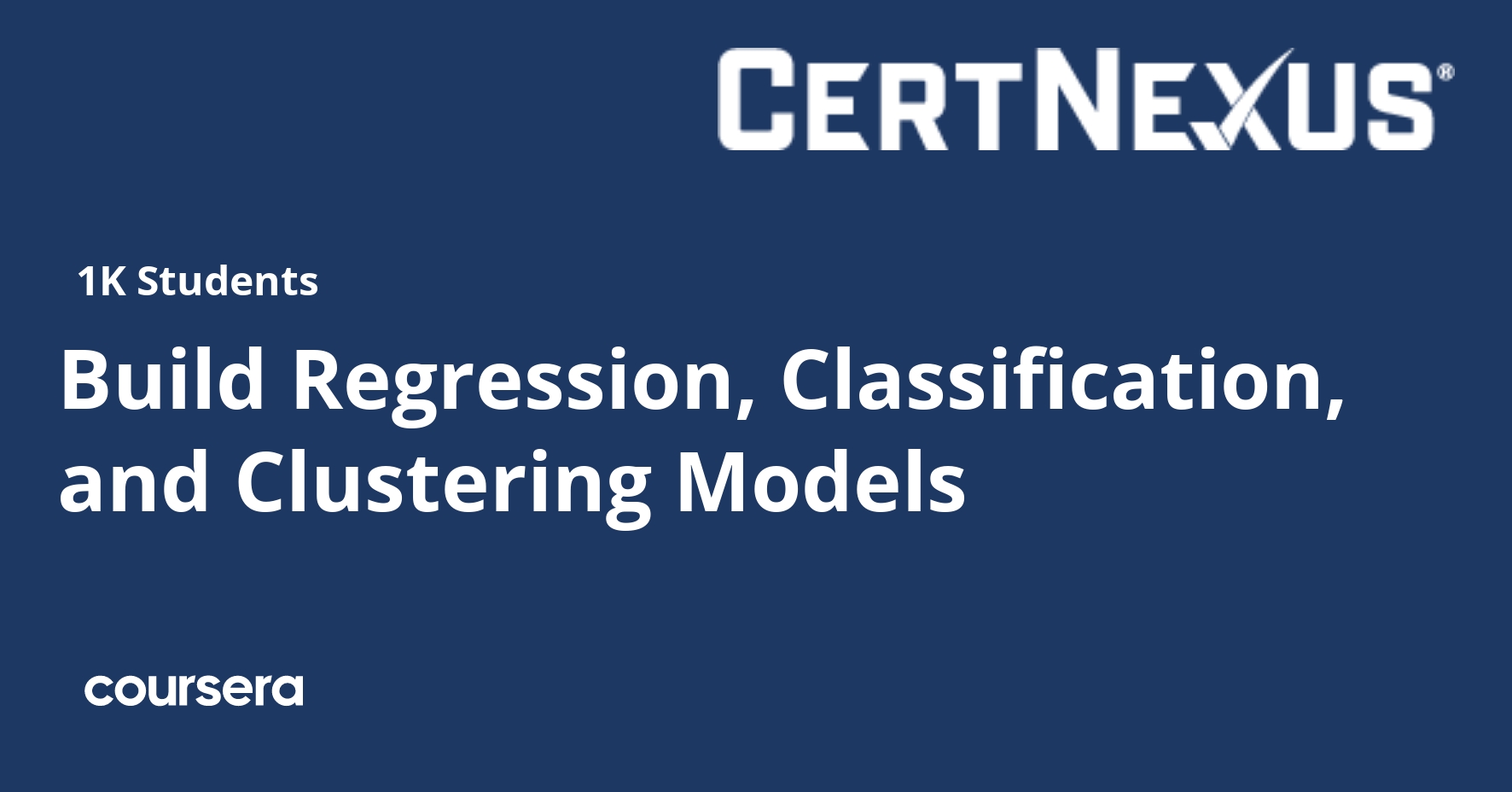Description
In most cases, the ultimate goal of a machine learning project is to produce a model. Models make decisions, predictions—anything that can help the business understand itself, its customers, and its environment better than a human could. Models are constructed using algorithms, and in the world of machine learning, there are many different algorithms to choose from. You need to know how to select the best algorithm for a given job, and how to use that algorithm to produce a working model that provides value to the business.
This third course within the Certified Artificial Intelligence Practitioner (CAIP) professional certificate introduces you to some of the major machine learning algorithms that are used to solve the two most common supervised problems: regression and classification, and one of the most common unsupervised problems: clustering. You’ll build multiple models to address each of these problems using the machine learning workflow you learned about in the previous course.
Ultimately, this course begins a technical exploration of the various machine learning algorithms and how they can be used to build problem-solving models.
What you will learn
Build Linear Regression Models Using Linear Algebra
In the preceding course, you went through the overall machine learning workflow from start to finish. Now it’s time to start digging into the algorithms that make up machine learning. This will help you select the most appropriate algorithm(s) for your own purposes, as well as how best to apply them to solve a problem. A good place to start is with simple linear regression.
Build Regularized and Iterative Linear Regression Models
The simple model you created earlier works well in many cases, but that doesn’t mean it’s the optimal approach. Linear regression can be enhanced by the process of regularization, which will often improve the skill of your machine learning model. In addition, an iterative approach to regression can take over where the closed-form solution falls short. In this module, you’ll apply both techniques.
Train Classification Models
Besides linear regression, the other major type of supervised machine learning outcome is classification. To begin with, you’ll train some binary classification models using a few different algorithms. Then, you’ll train a model to handle cases in which there are multiple ways to classify a data example. Each algorithm may be ideal for solving a certain type of classification problem, so you need to be aware of how they differ.
Evaluate and Tune Classification Models
It’s not enough to just train a model you think is best, and then call it a day. Unless you’re using a very simple dataset or you get lucky, the default parameters aren’t going to give you the best possible model for solving the problem. So, in this module, you’ll evaluate your classification models to see how they’re performing, then you’ll attempt to improve their skill.





